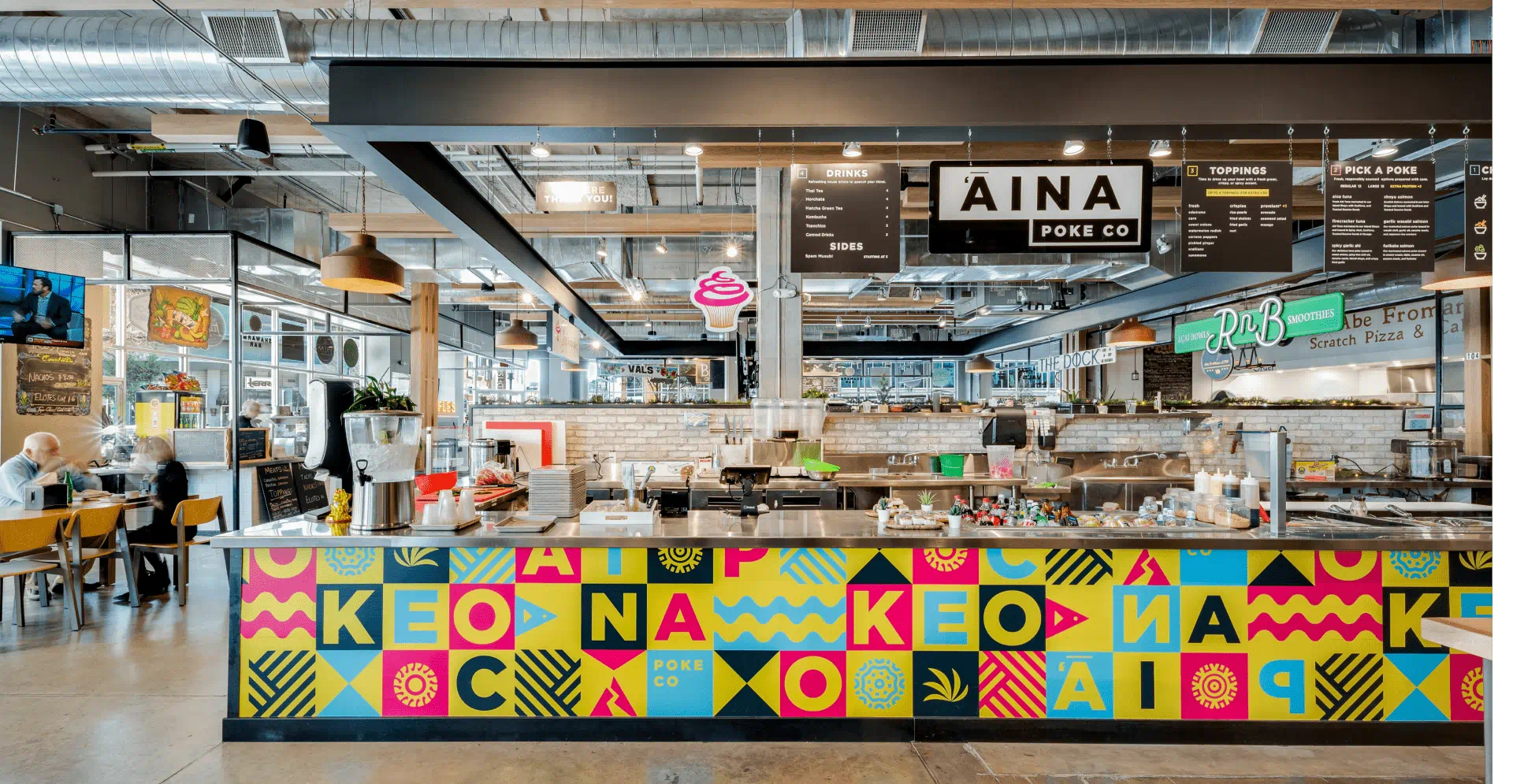How food halls celebrate cultures and human connection.
Recent years have shown significant growth in North America’s food hall market. Patrons enjoy the bustling energy and variety of cuisines, and chefs appreciate the low threshold for testing new markets and menus. They appeal to locals as well as tourists. Designed for flexibility and to be rebranded from one restaurant to another overnight, the utilitarian space of food halls is deceivingly simple. But underneath the plug-and-play kitchens and changeable graphics is a robust platform for cultural expression and discovery.
While sampling, patrons sit at communal tables in relaxed spaces that encourage social connection significantly more than mono-cultured restaurants. In representing diverse cultures, the food hall becomes a culture of its own and meets the needs of the community.
Take, for example, the HomePark food hall in Chengdu, China. Part market, part food hall, the space’s program evolves from day to night. Shoppers peruse the market in the morning, surrounded by graphics inspired by traditional Chinese paintings and calligraphy. Lunchtime brings the businesspeople from adjacent commercial towers, and the after-school youth crowd raises the energy level as they are freed from their studies. By carefully curating the cuisine, merchandise, and entertainment programs, the food hall deepens the community’s exposure to other cultures, all the while strengthening the culture of the community.

In addition to inspiring inclusivity through food, food halls can also act as a launch for chefs from underrepresented groups. Supporting a bottom-up economy, the enterprise provides chefs with the smallest investment to test their menu, work out the kinks, and gradually advance to a larger venue and presence. Food enthusiasts rush to be the first to sample what is new and quickly convince friends to gather. The assortment of vendors makes for easily agreed-upon group destinations with something for every taste, removing the pain points of deciding what to eat and finding the food that fits everyone’s mood.
As the food hall evolves, expanded cultural entertainment programs and community outreach will play an important role in positive impact. Quite simply, food halls feed people and their curiosity. They are a primer to deeper understanding and inclusivity, and diversity through food.








